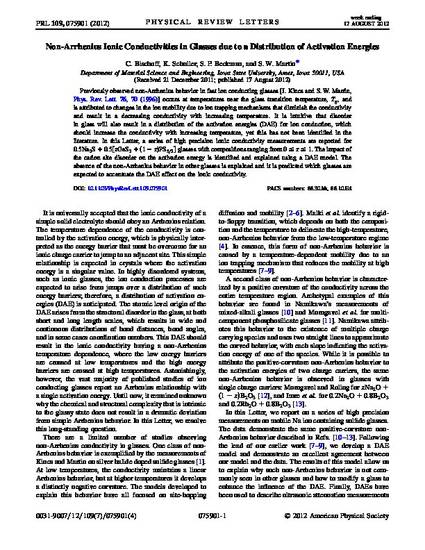
Previously observed non-Arrhenius behavior in fast ion conducting glasses occurs at temperatures near the glass transition temperature, Tg, and is attributed to changes in the ion mobility due to ion trapping mechanisms that diminish the conductivity and result in a decreasing conductivity with increasing temperature. It is intuitive that disorder in glass will also result in a distribution of the activation energies (DAE) for ion conduction, which should increase the conductivity with increasing temperature, yet this has not been identified in the literature. In this Letter, a series of high precision ionic conductivity measurements are reported for 0.5Na2S+0.5[xGeS2+(1−x)PS5/2] glasses with compositions ranging from 0≤x≤1. The impact of the cation site disorder on the activation energy is identified and explained using a DAE model. The absence of the non-Arrhenius behavior in other glasses is explained and it is predicted which glasses are expected to accentuate the DAE effect on the ionic conductivity.
Available at: http://works.bepress.com/steve_martin/3/

This article is from Physical Review Letters 109 (2012): 075901, doi:10.1103/PhysRevLett.109.075901. Posted with permission.